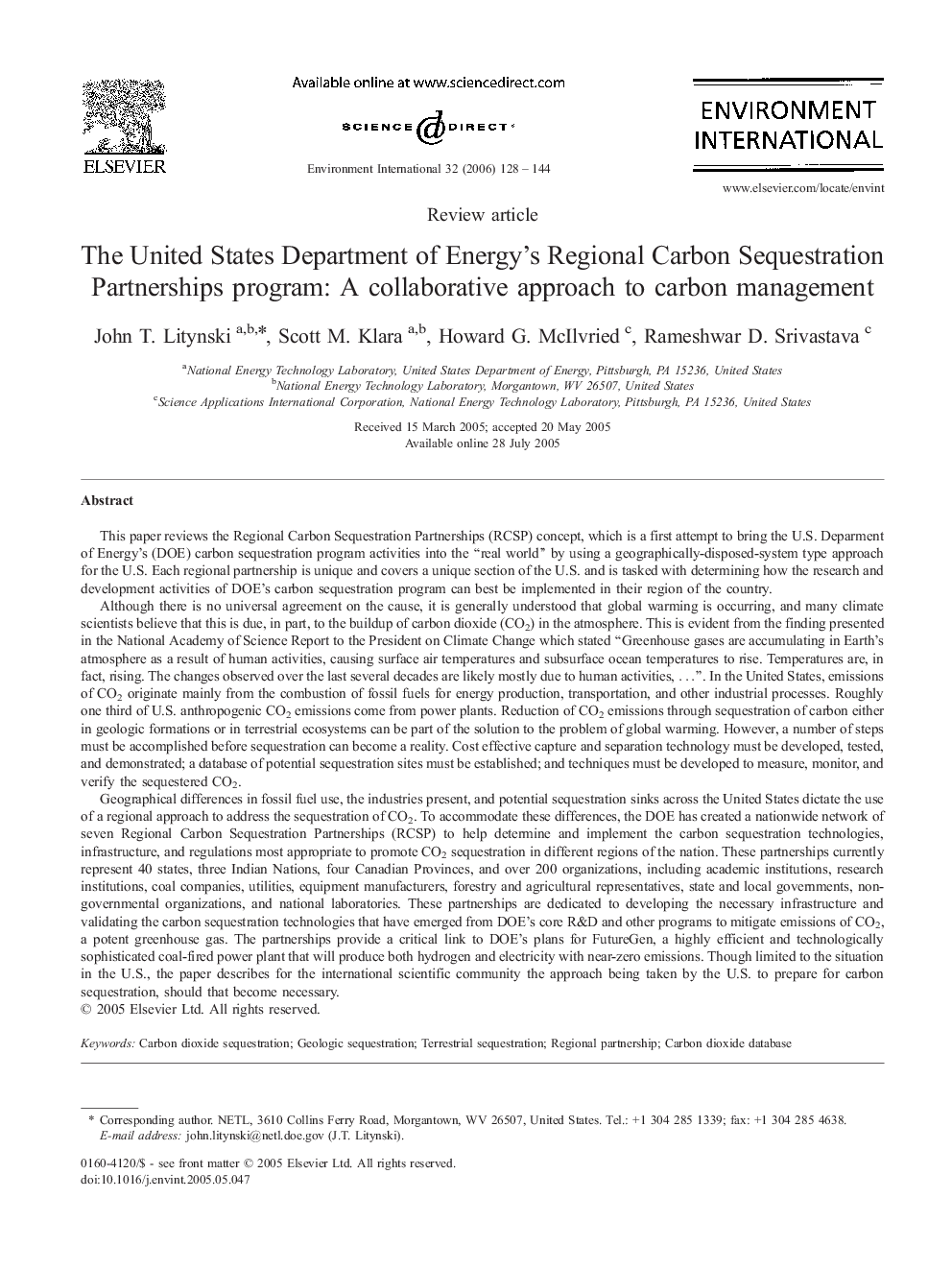| کد مقاله | کد نشریه | سال انتشار | مقاله انگلیسی | نسخه تمام متن |
|---|---|---|---|---|
| 4424147 | 1308866 | 2006 | 17 صفحه PDF | دانلود رایگان |

This paper reviews the Regional Carbon Sequestration Partnerships (RCSP) concept, which is a first attempt to bring the U.S. Deparment of Energy's (DOE) carbon sequestration program activities into the “real world” by using a geographically-disposed-system type approach for the U.S. Each regional partnership is unique and covers a unique section of the U.S. and is tasked with determining how the research and development activities of DOE's carbon sequestration program can best be implemented in their region of the country.Although there is no universal agreement on the cause, it is generally understood that global warming is occurring, and many climate scientists believe that this is due, in part, to the buildup of carbon dioxide (CO2) in the atmosphere. This is evident from the finding presented in the National Academy of Science Report to the President on Climate Change which stated “Greenhouse gases are accumulating in Earth's atmosphere as a result of human activities, causing surface air temperatures and subsurface ocean temperatures to rise. Temperatures are, in fact, rising. The changes observed over the last several decades are likely mostly due to human activities, …”. In the United States, emissions of CO2 originate mainly from the combustion of fossil fuels for energy production, transportation, and other industrial processes. Roughly one third of U.S. anthropogenic CO2 emissions come from power plants. Reduction of CO2 emissions through sequestration of carbon either in geologic formations or in terrestrial ecosystems can be part of the solution to the problem of global warming. However, a number of steps must be accomplished before sequestration can become a reality. Cost effective capture and separation technology must be developed, tested, and demonstrated; a database of potential sequestration sites must be established; and techniques must be developed to measure, monitor, and verify the sequestered CO2.Geographical differences in fossil fuel use, the industries present, and potential sequestration sinks across the United States dictate the use of a regional approach to address the sequestration of CO2. To accommodate these differences, the DOE has created a nationwide network of seven Regional Carbon Sequestration Partnerships (RCSP) to help determine and implement the carbon sequestration technologies, infrastructure, and regulations most appropriate to promote CO2 sequestration in different regions of the nation. These partnerships currently represent 40 states, three Indian Nations, four Canadian Provinces, and over 200 organizations, including academic institutions, research institutions, coal companies, utilities, equipment manufacturers, forestry and agricultural representatives, state and local governments, non-governmental organizations, and national laboratories. These partnerships are dedicated to developing the necessary infrastructure and validating the carbon sequestration technologies that have emerged from DOE's core R&D and other programs to mitigate emissions of CO2, a potent greenhouse gas. The partnerships provide a critical link to DOE's plans for FutureGen, a highly efficient and technologically sophisticated coal-fired power plant that will produce both hydrogen and electricity with near-zero emissions. Though limited to the situation in the U.S., the paper describes for the international scientific community the approach being taken by the U.S. to prepare for carbon sequestration, should that become necessary.
Journal: Environment International - Volume 32, Issue 1, January 2006, Pages 128–144